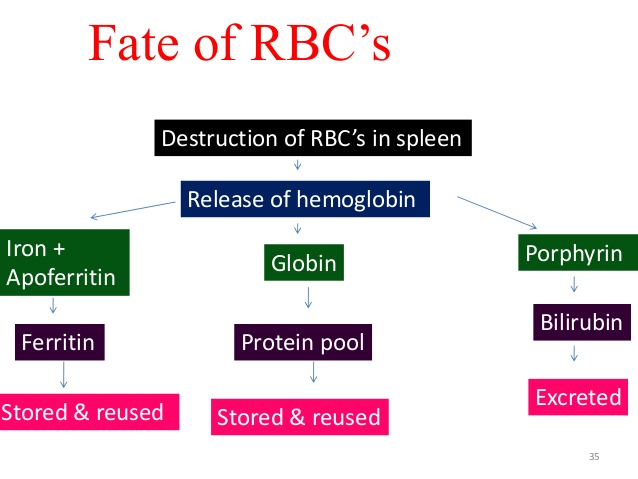W.B.C.S. Examination Notes On- FATE OF THE RED BLOOD CELLS – Medical Science Notes.
WBCS পরীক্ষার নোট – লোহিত রক্ত কনিকাগুলির ভাগ্য – মেডিকেল সায়েন্স নোটস।
The formation and death of the red blood corpuscles furnish part of the story of the changes that make up the “procession of life.” Unlike some of the other cells of the body, the erythrocytes are not formed once for all at birth, but those present in the blood stream represent the momentary residuum of antagonistic processes.Continue Reading W.B.C.S. Examination Notes On- FATE OF THE RED BLOOD CELLS – Medical Science Notes.
Today it is certain that a disintegration of red corpuscles takes place constantly, in sickness and in health. New demands are usually coped with successfully, so far as concerns the immediate task of accomplishing additional destruction, when that is necessary, or disposing of the products of a breaking down unprovoked by the body. But for such emergency purposes, other mechanisms besides the normal must frequently be called on.
The average life span of healthy red blood cells (RBCs) is 120 days, but that can be shortened in pathologic conditions including sepsis and in illnesses like sickle cell disease that interfere with normal production of RBCs. The cells also can become damaged during coronary bypass surgery or dialysis, and blood transfusions may contain RBCs that were damaged in the process of collection, storage and administration. Damaged RBCs can release unbound forms of iron-carrying hemoglobin, which can cause kidney injury, and can lead to anemia, reducing the delivery of oxygen to tissues. If disease-associated RBC damage overwhelms the body’s ability to clear aged RBCs, toxic levels of free iron can be released.
In the current study, the research team used several different models of RBC damage, including blood from human bypass patients, to investigate the mechanisms involved in clearance of the cells and the recycling of their iron. Experiments in mice revealed that the presence of damaged RBCs in the bloodstream led to a rapid increase in a specific population of monocytes that took up the damaged cells and traveled to both the liver and the spleen. But several hours later almost all of those RBCs were located within a population of specialized macrophages — cells produced by monocytes that engulf and dispose of debris, damaged cells, and microbes — that were observed only in the liver. Those macrophages eventually disappeared once they were no longer needed.
The investigators also showed that expression of chemokines — proteins that direct the movement of other cells — draws RBC-ingesting monocytes to the liver, resulting in the accumulation of the iron-recycling macrophages. Blocking that process led to several indicators of impaired RBC clearance, including toxic levels of free iron and hemoglobin and signs of liver and kidney damage.
“The fact that the liver is the main organ of RBC removal and iron recycling is surprising, as is the fact that the liver relies on a buffer system consisting of bone marrow-derived monocytes that consume damaged red blood cells in the blood and settle in the liver, where they become the transient macrophages capable of iron recycling,” says Swirski, who is an associate professor of Radiology at Harvard Medical School. “The mechanism we identified could be either helpful or damaging, depending on the conditions. If overactive, it could remove too many RBCs, but if it’s sluggish or otherwise impaired, it could lead to iron toxicity. Further study could provide us with details of how this mechanism occurs in the first place and help us understand how to harness or suppress it in various conditions.”
Please subscribe here to get all future updates on this post/page/category/website


 +919674493673
+919674493673  mailus@wbcsmadeeasy.in
mailus@wbcsmadeeasy.in







































































































